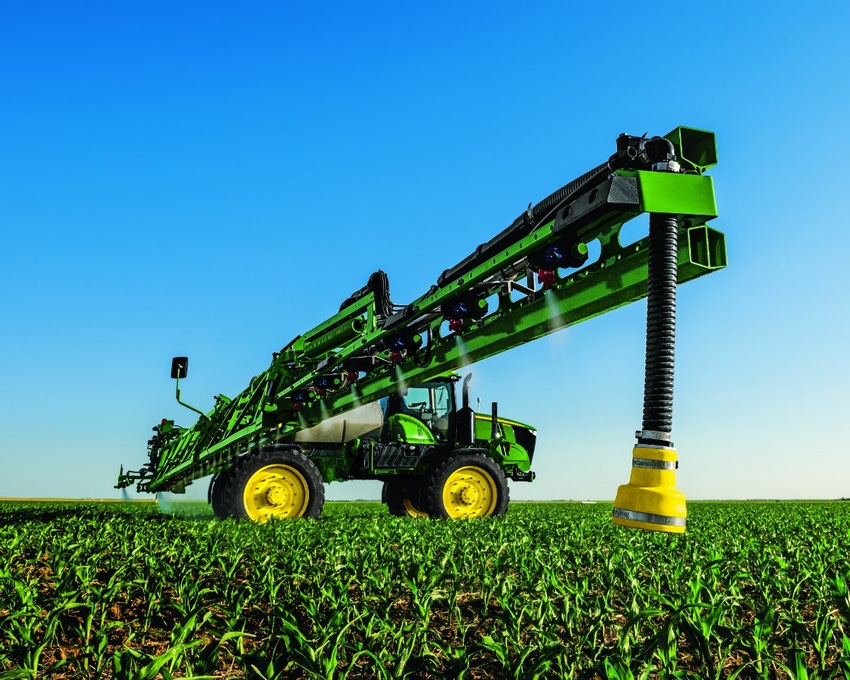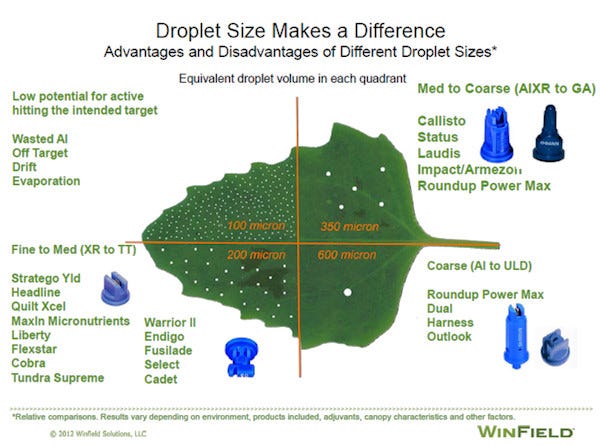April 22, 2016

Note: This is our final installment of the sprayer tech series - wrapping up coverage of a topic that should be top of mind for many producers as planters get parked and sprayers go to work. Don't miss our other installments of this series:
7 products you shouldn't go without at spray time
3 biggest mistakes applicators make
Video Demo: Picking the right spray nozzle
Sometimes a picture can paint a thousand words, especially when talking about sprayer technology. In his talks on how to select the right spray nozzle, Winfield agronomist Mark Glady uses a schematic of a leaf, divided into quadrants, to show which nozzle works best for different types of pesticides. Check out the image at the end of this story and match it to the quadrant description below.
Each quadrant of the leaf shows a different droplet size and the corresponding nozzle that produces that size. Droplets are measured in microns, and the bigger the droplet the higher number of microns.
Pesticides call for different sized droplets, or different levels of coverage, to be effective.
“Somewhere around 200 to 500 microns is the general rule or optimum range for the majority of our crop protection products,” Glady says.
You can use this leaf quadrant to dial in size and nozzle you need for each herbicide.
Here is what each quadrant is showing:
Upper left: As shown, not many pesticides, if any, call for droplets as small as 100 microns. Droplets this small are great for coverage—they almost completely cover the leaf surface—but the disadvantage is that they can drift away or evaporate before reaching the leaf surface. Nozzles that product these small droplets are generally not recommended.
Lower left: Post emergent crop protection products, such as the ones shown here, require 200 micron droplets to be most effective. These small droplets provide good coverage of the leaf surface. The nozzles that can produce these small droplets include the Flat Fan XR and TurboTee.
Upper right: Post-emergent corn herbicides such as Callisto, Status, Laudis, and Roundup Power Max prefer a medium size droplet in the range of 350 microns to work most effectively. The recommended nozzles are an Air Induction Extended range (AIXR) or Guardian Air.
Lower right: Pre-emergent herbicides such as, Dual, Harness, Outlook and others, which need to be incorporated in the soil by rainfall to work, don’t require a lot of coverage so you can get by with larger droplets (600 microns) to carry the active ingredient. For these herbicides, Air Induction and Ultra Low Drift nozzles are good options.

About the Author(s)
You May Also Like




